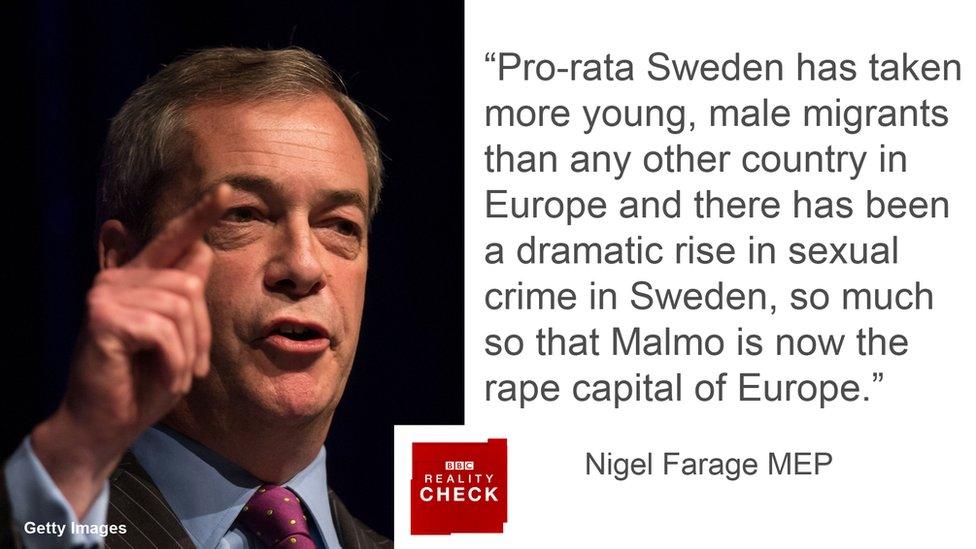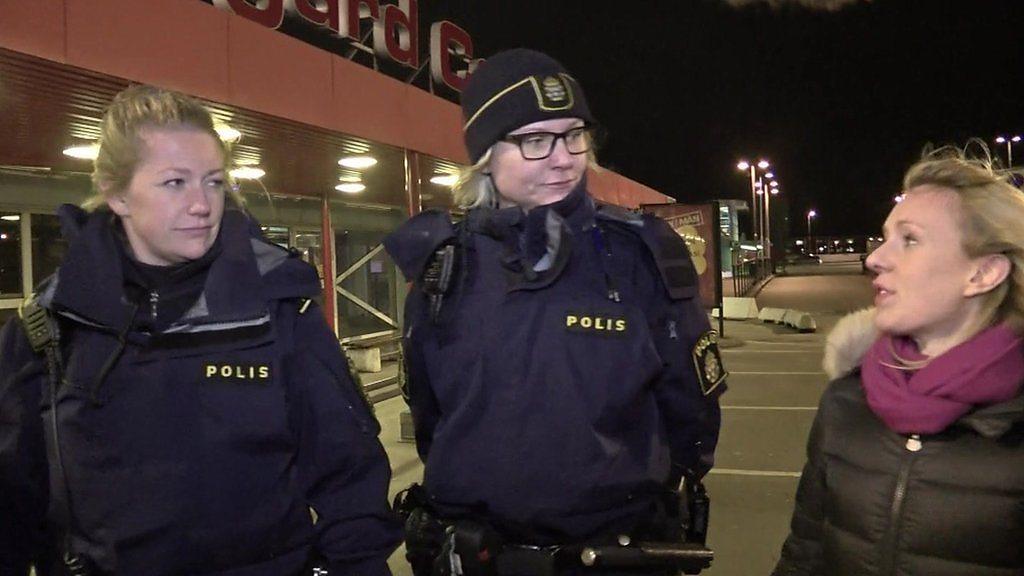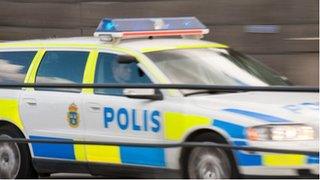Reality Check: Is Malmo the 'rape capital' of Europe?
- Published

The claim: Many young male migrants arrived in Sweden over the past few years, when the country accepted unprecedented numbers of refugees, and there has been a huge rise in sexual crime in Sweden especially in the southern port city of Malmo.
Reality Check verdict: Malmo, along with other urban centres in Sweden, has one of the highest levels of reported rapes in proportion to population in the EU, mainly due to the strictness of Swedish laws and how rape is recorded in the country.
The rate of reported rapes in Malmo has not dramatically risen in recent years and has in fact declined from its peak in 2010, before the recent large increases in refugees.
It is not possible to connect crimes to the ethnicity of the perpetrators as such data is not published.
Former UKIP leader Nigel Farage made this claim on LBC radio on Monday 20 February, when he discussed the recent comments by US President Donald Trump about terrorism in Sweden.
Mr Farage said there had been no specific terrorist attacks in Sweden since large numbers of refugees arrived there, but, instead, he claimed Sweden had seen a dramatic rise in sexual crime and its southern port city of Malmo - the third largest city in the country - had become Europe's and possibly the world's "rape capital".
So, has there been a big rise in sexual crime in Sweden and have the numbers of rapes increased in Malmo since Sweden took in an unprecedented numbers of refugees?
The first thing to say is that the part of the claim referring to the number of refugees is certainly true.
Sweden has been one of the biggest recipients of refugees in the EU in recent years.
According to Eurostat, the agency that collects statistical data from all EU countries, in 2015 Sweden had over 162,000 asylum applications or 1,667 asylum seekers for every 100,000 citizens.
A large majority of the 2015 asylum seekers - 114,470 - were male, 45,790 of them between 18 and 34 years of age.
Have there been more sexual offences in Sweden?
"Sexual offences" is a very broad term, which refers to a range of all sex-related crimes in Sweden.
Rape is one of the sexual offences, but other crimes such as paying for sex, sexual harassment, indecent exposure, sexual exploitation, molestation and trafficking are included in the numbers as well.
The figures peaked in 2014. The Swedish National Council for Crime Prevention (Bra) says this rise is due to the changes to the legislation in 2013, which made it tougher.
Similar increases in the number of reported cases were seen in 2006, after new sex offence legislation came into force in April 2005.
Since then, Sweden has recorded every reported case of sexual violence separately.
That means, as Susanne Lekengard from Bra explains, that if a person comes to the police and reports being raped by a partner or husband every day for the past year, the police will record each of these events.
In many other countries these incidents would be recorded just once: one victim, one type of crime and one record.
Also, paying for sex became one of the crimes counted in the statistics.
During 2015, the year in which Sweden took the largest number of asylum seekers, the number of reported sex crimes and rapes actually decreased by 11% and 12% respectively compared with 2014 - 18,100 sex offences were reported to the police, of which 5,920 were classified as rape.
Preliminary figures for 2016 show a rise, bringing the latest figures close to 2014 values.
Susanne Lekengard says the rise of the number of sexual molestation cases in 2016 is due to a higher number of reported cases of sexual harassment amongst teenagers at summer music festivals.
Sweden does not publish the ethnicity or national background of perpetrators of any crime, including sexual offences.
What about rape in Malmo?
According to Bra, the number of reported rape cases in proportion to the population in the municipality of Malmo has not seen a sharp increase since the biggest group of refugees arrived.
Reported rapes per 100,000 inhabitants peaked in 2008, 2010 and 2011, and the figures were higher for those pre-refugee influx years than in 2015 and 2016.
In addition, the reported rape figures were not higher in the Malmo municipality, compared with two other major urban municipalities in Sweden: the capital Stockholm and Gothenburg in the west.
What about an international comparison?
It is very hard to compare sex-related offences and rape across the world.
Police procedures and legal definitions vary widely around the world, making an international comparison meaningless.
The 2012 UN international rape rate comparison showed Sweden to have the highest rate of rape in Europe and the second highest in the world, but the report did not contain data for a total of 63 countries that did not submit any statistics, including, for example, South Africa, where other earlier surveys indicated a very high rape rate.
The most recent Eurostat data for the 28 EU countries also puts Sweden in the top spot.
But the agency warns, external that comparisons between different countries should be avoided because of differences between their legal and criminal justice systems, recording practices, reporting rates, efficiencies of criminal justice organisations and types of offences included in the categories.
There has also been a public debate in Sweden over the past two decades to raise awareness and encourage women to go to the police if they have been attacked.
This has resulted in a higher report rate than in other countries in Europe.


Update 27 February 2017: This report has been amended to include the preliminary figures for reported sex offences in Sweden in 2016.
- Published24 February 2017

- Published20 February 2017

- Published15 September 2012
